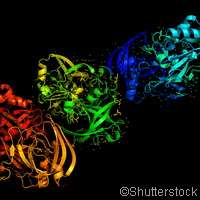Researchers uncover new mechanistic insight into mRNA biogenesis and export

A team of EU-funded Spanish and Polish researchers have revealed the structure of a protein complex that is essential for messenger RNA (mRNA) biogenesis and export. Writing in the European Molecular Biology Organization (EMBO) Journal, the team describe how the data on its architecture helped identify a mechanism by which this assembly factor recognises and binds nucleic acids.
The protein complex, known as the 'THO complex', is directly associated with mRNA transcription, biogenesis and export. Although DNA is transcribed in the cell nucleus, the ribosomes that translate RNA into proteins are in the cytoplasm. Therefore export of the mRNA, a process not yet fully understood by scientists, is essential for gene expression. One reason that scientists remain in the dark about the process is THO complex's very limited solubility, which makes it impossible to purify for X-ray crystallography.
The researchers used electron microscopy with various labelling techniques to generate an atomic model. With their three-dimensional reconstruction, they discovered that the complex does not have four different proteins, as previously believed, but five; the newly identified protein is responsible for binding to other proteins that can also regulate mRNA processing, packaging and export. The team also located the portion of the complex that binds directly to nucleic acids, an unfolded region located in one of the proteins of the complex.
Their findings show that gene expression is indicated by the fact that, depending on the target gene, its alteration causes genomic instability.
The 3D-REPERTOIRE project was set up to improve our understanding of the network of interactions between genes, proteins and the functional systems that these produce.
As even the most primitive living organism is very complex and science still has much to learn about many of the intricacies, it is unlikely that in the near future scientists will reach an understanding at the level of an entire cell. To meet this goal, they will need to understand the biological function of all the genes and proteins within genomes. Proteins rarely act alone and they typically interact with other macromolecules to perform particular cellular tasks. The resulting functional assemblies are more than the sum of their parts, and their function is not easily understood by even the most systematic analyzes of single proteins.
More information: Pena, A., et al., 2012, 'Architecture and nucleic acids recognition mechanism of the THO complex, an mRNP assembly factor', EMBO. doi:10.1038/emboj.2012.10
Provided by CORDIS















